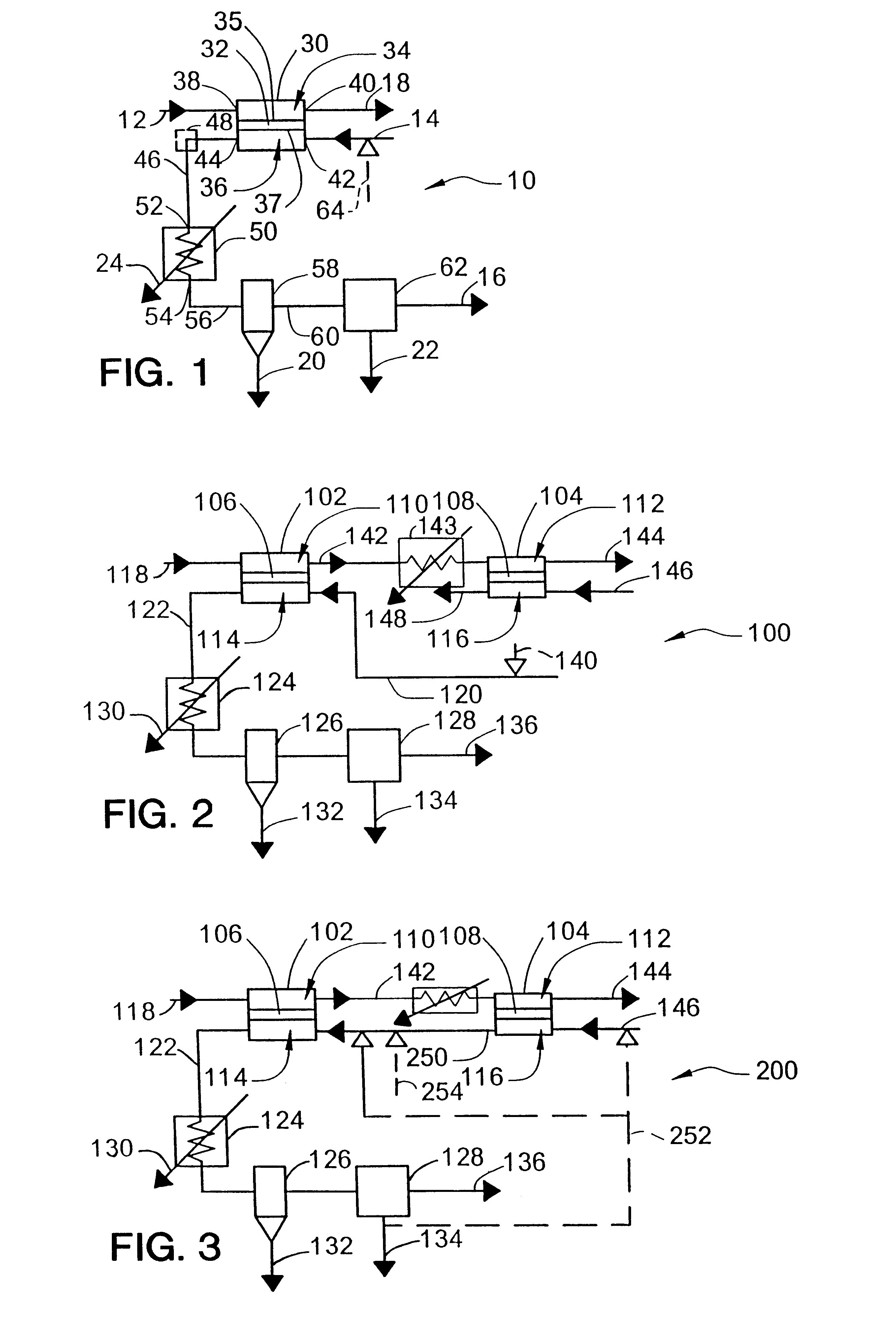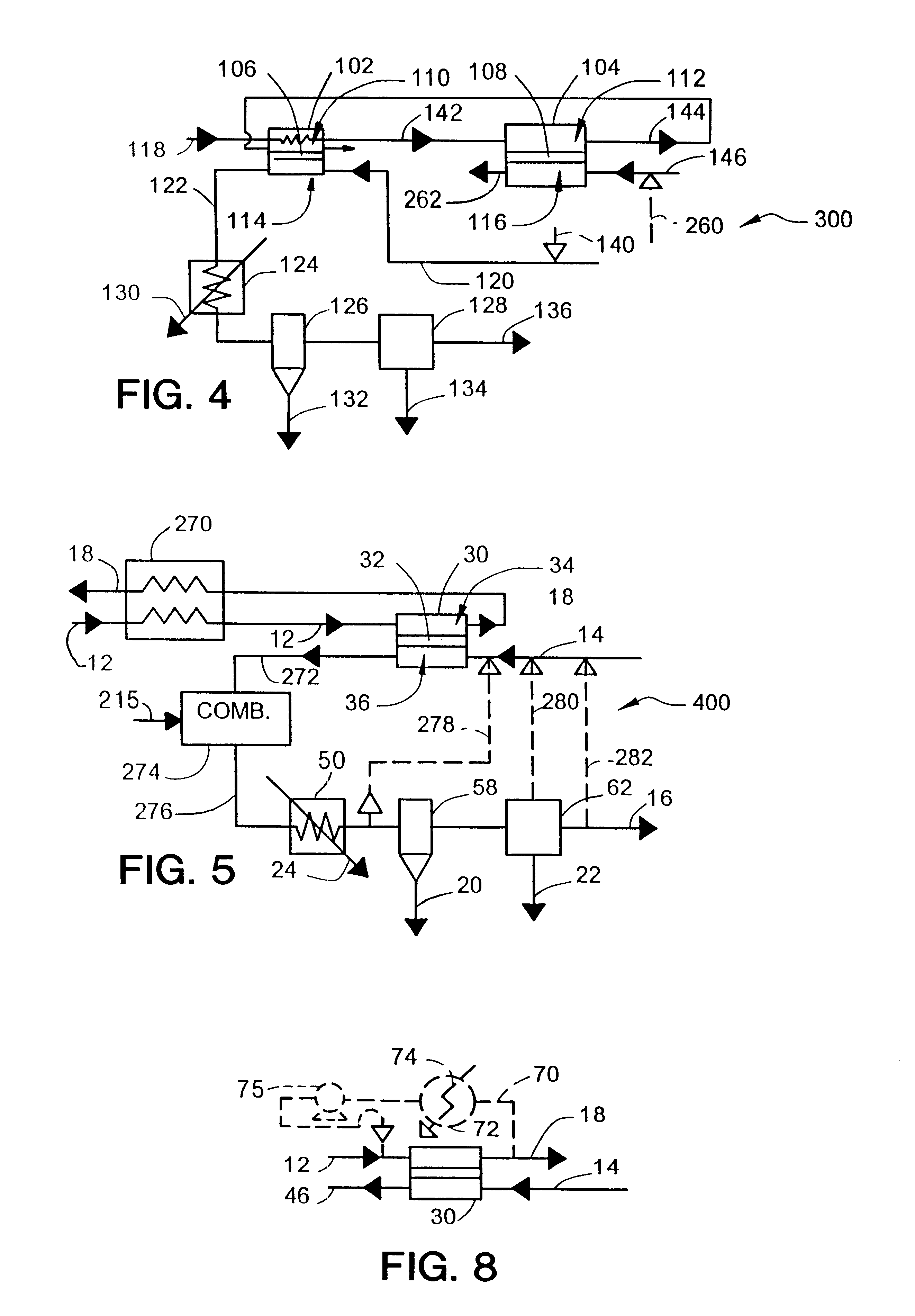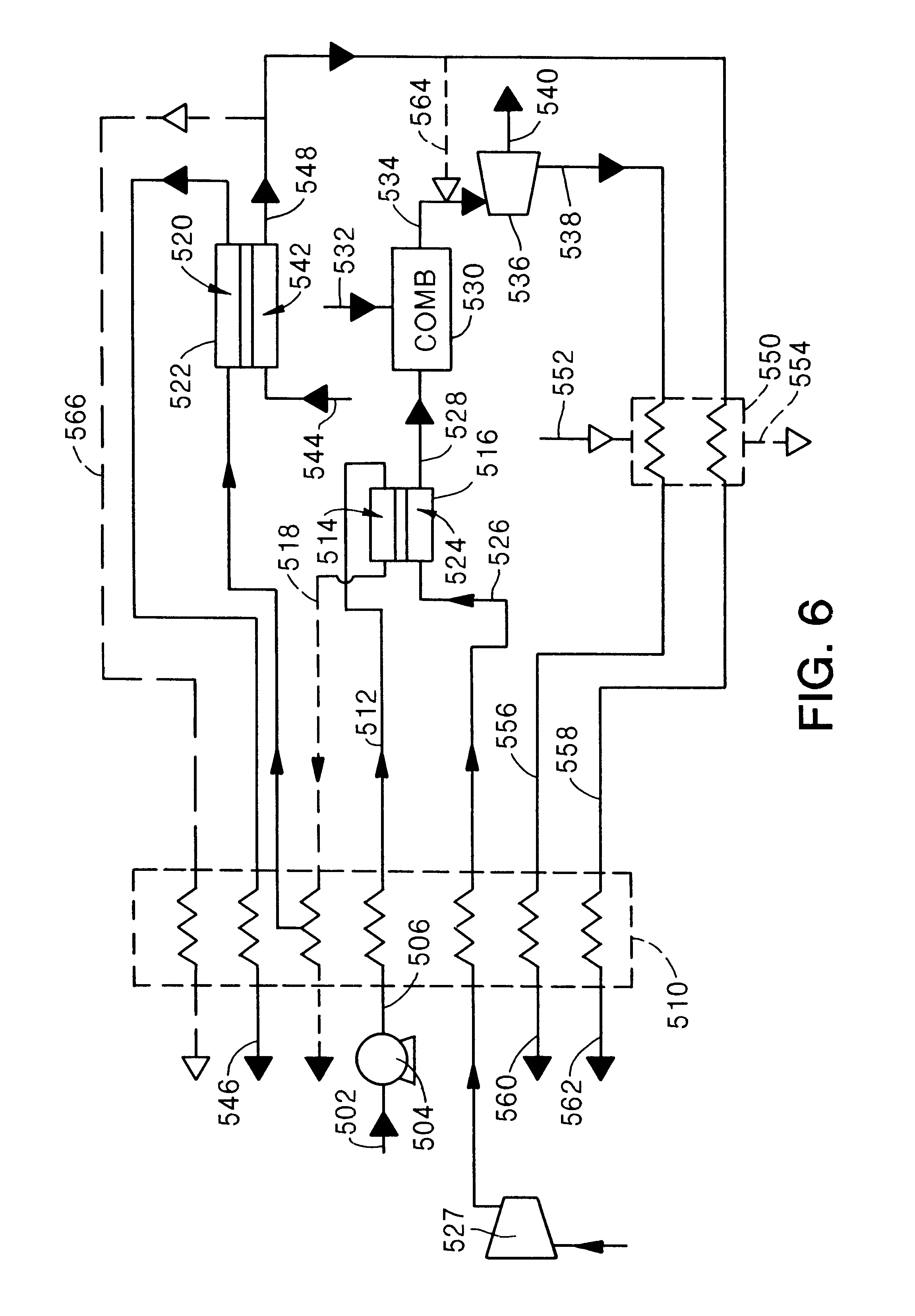Method and apparatus for producing carbon dioxide
- Summary
- Abstract
- Description
- Claims
- Application Information
AI Technical Summary
Benefits of technology
Problems solved by technology
Method used
Image
Examples
example 1
In the system 100 of FIG. 2, each ionic / mixed conducting membrane reactor module may be composed of 1000 tubes, each 10 feet long and 1 inch in diameter. The total surface area of the tubes is about 2,618 ft.sup.2 (calculated as the average of the total area of the cathode side surfaces and the anode side surfaces). The oxygen flux is known to decrease with decreasing oxygen concentration on the cathode side, so there is an estimated oxygen flux of 10 standard cubic feet per hour per square foot (scf / hr / ft.sup.2) for oxygen concentrations greater than 7% (the first reactor 102) and an oxygen flux of 5 scf / hr / ft.sup.2 for oxygen concentrations less than 7% (the second reactor 104). In this case, the two reactors will be the same size and the oxygen concentration will be reduced from 21% to 7% in the first reactor and from 7% to 0% in the second reactor. The total amount of oxygen removed in each module of the first reactor 102 is about 2,150 lb / hr, or 25,800 standard cubic feet per h...
example 2
An alternative for CO.sub.2 production is to use the purge stream from the second ionic / mixed conducting membrane reactor to purge the first reactor in the system 200 of FIG. 3. This process uses the same number of modules as Example 1, consumes the same amount of air as Example 1, and produces the same amount of nitrogen.
However, it produces up to 50% more CO.sub.2. The reason for such a dramatic improvement is that this system takes advantage of the fuel converted on the anode of the second ionic / mixed conducting membrane reactor while the process in FIG. 2 does not. It is expected that additional purification would be necessary with this process compared to the process in Example 1.
example 3
An alternative process involves the use of the second reactor to produce synthesis gas, as in the system 300 of FIG. 4. In this process, the CO.sub.2 reactor 102 will be smaller than the synthesis gas reactor 104 and will serve to preheat the oxygen-depleted gas stream 142 fed to the synthesis gas reactor. In this example, the synthesis gas reactor typically runs at a higher temperature (1,800.degree. F. instead of 1,700.degree. F.). The temperature increase reduces the amount of unconverted methane and complete combustion products. The oxygen flux is also expected to increase at the higher temperature. Some of the extra heat can be recovered by heat exchange or by producing steam. Additional heat exchangers will be needed to preheat the inputs to the reactors because the temperature is higher and because the partial oxidation reaction to produce synthesis gas is much less exothermic than the complete combustion reaction to produce CO.sub.2.
The reactor module size in this example is...
PUM
| Property | Measurement | Unit |
|---|---|---|
| Temperature | aaaaa | aaaaa |
| Pressure | aaaaa | aaaaa |
| Power | aaaaa | aaaaa |
Abstract
Description
Claims
Application Information
 Login to View More
Login to View More - R&D
- Intellectual Property
- Life Sciences
- Materials
- Tech Scout
- Unparalleled Data Quality
- Higher Quality Content
- 60% Fewer Hallucinations
Browse by: Latest US Patents, China's latest patents, Technical Efficacy Thesaurus, Application Domain, Technology Topic, Popular Technical Reports.
© 2025 PatSnap. All rights reserved.Legal|Privacy policy|Modern Slavery Act Transparency Statement|Sitemap|About US| Contact US: help@patsnap.com



